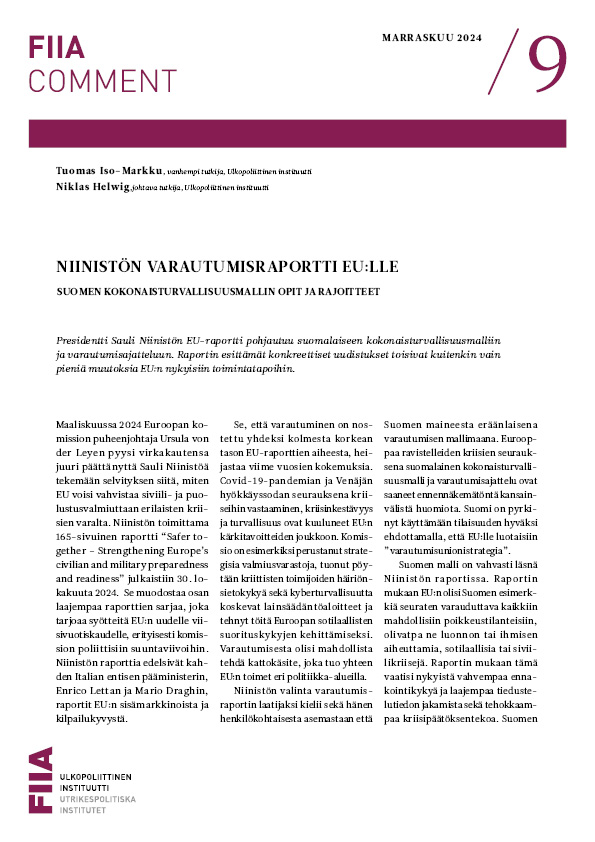In late February, the European Parliament agreed on a compromise text for the current proposal of an energy efficiency directive. By so doing, MEPs paved the way for fast track negotiations with the Council of the European Union and for the passing of the directive within the current Danish presidency.
Energy efficiency has been a priority on the EU’s agenda for quite some time – before it became occupied with the Euro-crisis – as it is key for a number of other EU priorities, such as climate change, energy security and competitiveness. By lowering primary energy requirements, energy efficiency lowers emissions and complements renewable energies by providing low carbon energy services; indeed, the most secure energy is the one that does not need to be produced or purchased in the first place.
Furthermore, a successful energy efficiency strategy would provide European business with a competitive edge, both in terms of energy cost savings and being the market leader in developing energy saving products.
Therefore, energy efficiency became a cornerstone of the integrated energy and climate change package – the so-called ‘20/20/20’ targets – established at the Council’s spring session in March 2007. More precisely, the aim is to use 20% less energy in 2020, compared to baseline projections, and therefore compliment the other goals for 2020 of producing 20% of primary energy from renewable energies and emitting 20% less greenhouse gas emissions (30% less emissions in the event of an international agreement) compared to 1990 levels.
However, Europe is not on track. The most recent estimates predict that it may reach only half of the savings by 2020. A large part of this is due to the fact that the goal of efficiency – as the only one of the three above – is not binding. Therefore, Europe has renewed its commitment to energy efficiency and made it a central pillar of the overall ‘Europe 2020 – A strategy for smart, sustainable and inclusive growth’, consisting of five so-called ‘headlines targets’ and seven ‘flagship initiatives’. Here, the 20/20/20-package is one of the former, and a ‘resource-efficient Europe’ one of the latter.
The concrete outcome of this new commitment was a proposal for a directive on energy efficiency, published in June 2011. This approach concentrates on and strengthens the most crucial regulatory parts of previous directives, and merges them by repealing them totally (cogeneration) or in part (energy services, energy labelling) and focusing on energy savings from end-use energy.
On 28 February – that is, even before the parliament’s plenary vote on 28 March – the European Parliament’s Committee on Industry, Research and Energy (ITRE) agreed on a compromise text. In doing so, ITRE-members opened a window of opportunity to reach a final agreement during the current Danish presidency by enabling immediate negotiations with the Council and thereby fast-tracking the procedure. This shows a good sense of political leadership, given energy efficiency is among the priorities of the Danish presidency. The subsequent Cypriote presidency starts on 1 July (and is followed by Ireland, Lithuania and Greece) but it is not, however, known to have this priority, which could potentially postpone any decisive action well into 2013.
With the experience of the 2007 approach in mind, the current parliamentary agreement strikes a balance between mandatory targets and a mandatory implementation and monitoring regime but stops short of directly prescribing specific measures.
On the one hand, under these schemes member states would be obliged to subscribe to national energy savings goals (including intermediate goals), to establish mandatory national energy saving schemes with annual end-use savings, of which at least 1.5% are new, and additional autonomous savings – including significant shares of deep renovations in buildings.
It would further require member states to establish financing facilities, to renovate 2.5% of public buildings annually and to set minimum criteria for energy audits, smart meters, cogeneration, consumer information and energy services. In annual reports, the member states would have to spell out what measures they will implement, as well as how much they will save from those measures, and whether or not they are on track, with the Commission being able to require additional measures if they are not.
On the other hand, however, the compromise would not prescribe any specific measure that the member states would have to implement to reach their goals. A suitable financing scheme, for instance, may look different in every member state, while a requirement for double-glazed windows may be an innovation in one member state but obsolete in another.
In other words, while the current agreement would require member states to do something appropriate to reach their targets and to be held accountable through transparency monitoring (a target-only approach, too, has often been shown to be unsuccessful in the past), it leaves a degree of flexibility as to what exactly this may be in order to accommodate for national circumstances.
Despite the currently overwhelming Euro-crisis, European policy makers should strive to give energy efficiency the clout it needs in order to become a cornerstone of the necessary long-term structural change towards a European low carbon economy. By putting a compromise on the table already, the Parliament has created a window of opportunity to agree on the final legislation by the middle of the year, i.e. during the Danish presidency that made this issue a distinct priority. The ball is now in the Council’s court and it must make use of this opportunity in order to make it happen.








